virginia
 For most women, especially during the Revolutionary War era, life’s losses brought a long time of mourning, the wearing of black dresses, and times of reflection, before they eventually consider remarrying. For Anne Hennis Trotter Bailey, whose lifestyle earned her the name “Mad Anne” for her acts of bravery and heroism that were considered to be somewhat eccentric for a woman of her time, loss brought about quite the opposite reaction. Anne Hennis was born in Liverpool England in 1742. She was formally educated and learned to read and write. Her first experience with loss came before she turned 18. It is not known how they died, but both of Anne’s parents were gone before she turned 18, and she became an orphan. Life for Ann, who was poor and had a hard time earning enough money to survive, immediately became very hard. Anne had family near Staunton in the Shenandoah Valley, and when she was 19, she sailed to America to live with them. There, in 1765, she met and married Richard Trotter, a seasoned frontiersman and experienced soldier. The couple had one son named William.
For most women, especially during the Revolutionary War era, life’s losses brought a long time of mourning, the wearing of black dresses, and times of reflection, before they eventually consider remarrying. For Anne Hennis Trotter Bailey, whose lifestyle earned her the name “Mad Anne” for her acts of bravery and heroism that were considered to be somewhat eccentric for a woman of her time, loss brought about quite the opposite reaction. Anne Hennis was born in Liverpool England in 1742. She was formally educated and learned to read and write. Her first experience with loss came before she turned 18. It is not known how they died, but both of Anne’s parents were gone before she turned 18, and she became an orphan. Life for Ann, who was poor and had a hard time earning enough money to survive, immediately became very hard. Anne had family near Staunton in the Shenandoah Valley, and when she was 19, she sailed to America to live with them. There, in 1765, she met and married Richard Trotter, a seasoned frontiersman and experienced soldier. The couple had one son named William.
During the westward movement, when more and more people were heading west in search of land and adventure, fights began to break out between settlers and the Indians who had lived there for many years. The Governor of Virginia organized border militia to protect the settlers there. Richard Trotter joined this militia. On October 19, 1774, Shawnee Chief Cornstalk attacked the Virginia militia, hoping to halt their advance into the Ohio Country. This became known as the Battle of Point Pleasant. The battle raged on until Cornstalk finally retreated. The Virginians, along with a second force led by Lord Dunmore, the Royal Governor of Virginia, then marched into the Ohio Country. Cornstalk had no choice but to agree to a treaty, ending the war. Many men on both sides lost their lives in the battle, including Richard Trotter.
For Anne this could have meant years of sadness as a widow, but Anne would have none of that. Anne, upon learning of her husband’s death, and determined to seek revenge, left her young son in the care of neighbors, dressed in the clothing of a frontiersman, and set out to avenge her loss. A woman alone going out to kill the Indians seemed like an insane move to make, and most people probably thought she would be dead in a matter of days…but they didn’t know Anne. She became known as “Mad Anne” from that time forward….to whites and Indians alike. In the beginning, Anne rode from one recruiting station to another, asking them to volunteer their services to the militia in order to keep the women and children of the border safe, to fight for freedom from the Indians, and later the British.
People from Staunton, Virginia, to what is now Charleston, West Virginia, and Gallipolis, Ohio, knew Anne, mostly due to the unusual sight she presented. She usually wore buckskin leggings, petticoats, heavy brogan shoes, a man’s coat and hat, a hunting knife in a belt around her waist, and a rifle slung over her shoulder…everything she needed to be in the pioneer spirit in the late 1700s. Although Mad Anne mostly rode up and down the western frontier, she also recruited for the Continental Army, and delivered messages between various Army detachments during the Revolutionary War. It seemed that there was no job she wouldn’t take, including traveling as a courier on horseback between Forts Savannah and Randolph, a distance of almost 160 miles. Her fearless personality made her well known and respected by the settlers along the route. Mad Anne  was even respected, or maybe feared is a better word, by the Shawnee Indians. On her rides Bailey often came across a particular group of Shawnee Indians. They often chased her, then on one such encounter, she had had enough. Just when she was about to be caught, she jumped off her horse and hid in a log. Strangely, the Shawnee looked everywhere for her and even stopped to rest on the log, but they could not find her. Finally, they gave up and stole her horse. She waited a while after they left, and then came out of the log. She waited until nightfall, then crept into their camp and retrieved her horse…a bold move, but nothing like the next move she made. Once she was far enough away, she started screaming and shrieking at the top of her lungs. Now waking up to that would be shocking enough, but this woman was acting totally crazy, and the Shawnee thought she was possessed and therefore could not be injured by a bullet or arrow. After that display, the Shawnee saw her often, but the kept far away from her, because they were totally afraid of her. With that assurance backing her, Mad Anne knew that she was relatively safe living in the woods.
was even respected, or maybe feared is a better word, by the Shawnee Indians. On her rides Bailey often came across a particular group of Shawnee Indians. They often chased her, then on one such encounter, she had had enough. Just when she was about to be caught, she jumped off her horse and hid in a log. Strangely, the Shawnee looked everywhere for her and even stopped to rest on the log, but they could not find her. Finally, they gave up and stole her horse. She waited a while after they left, and then came out of the log. She waited until nightfall, then crept into their camp and retrieved her horse…a bold move, but nothing like the next move she made. Once she was far enough away, she started screaming and shrieking at the top of her lungs. Now waking up to that would be shocking enough, but this woman was acting totally crazy, and the Shawnee thought she was possessed and therefore could not be injured by a bullet or arrow. After that display, the Shawnee saw her often, but the kept far away from her, because they were totally afraid of her. With that assurance backing her, Mad Anne knew that she was relatively safe living in the woods.
Anne met John Bailey, a member of a legendary group of frontier scouts called the Rangers, after several years living on her own. The Rangers were defending the Roanoke and Catawba settlements from Indian attacks. He was rather smitten with Mad Anne’s rough ways, and they were married November 3, 1785. In 1787, along the Kanawha River at the mouth of the Elk River, a blockhouse was built. The block house would later become Fort Lee in honor of Virginia’s Governor Henry Lee. Fort Lee was where John Bailey was assigned to duty, taking with him his now famous, gun-toting, hard-riding bride.
In 1788, John Bailey was transferred to Fort Clendenin, which was a more active area of conflict between the settlers and Native Americans. Anne Bailey began working for the settlers as well, riding on horseback to warn them of impending attacks. In 1791, she singlehandedly saved Fort Lee from certain destruction by hostile Indians with a three-day, 200–mile round trip to replenish their supply of gunpowder. She rode for hours, finally reaching Fort Savannah at Lewisburg, where the gunpowder was quickly packed aboard her horse and one additional mount, before she reversed her direction and galloped full speed back to Fort Lee.
After she returned, the siege was ended, the attackers were defeated. For her bravery Anne was given the horse that had carried her away and brought her safely back. The animal was said to have been a beautiful black, sporting white feet and a blazed face. She dubbed him Liverpool, in honor of her birthplace. Anne Bailey was forty-nine years old when she made this famous ride. Anne became a legend among the other settlers, and she was always welcome in their homes. John Bailey died in 1802, and Anne decided that she no longer wanted to live in a house, so she lived in the wilderness for over 20 years. She visited friends in town occasionally, but usually slept outside. Her favorite place was a cave near Thirteen Mile Creek.
A widow for the second time, and in her late fifties, Anne later went to live with her son, but her love for riding and of the wilderness had not ceased. For many years afterwards she could be seen riding from Point Pleasant to Lewisburg and Staunton, carrying mail and as an express messenger. Bailey continued working as a messenger,  bringing supplies for the settlers throughout the area. She finally retired in 1817 after making one last trip to Charleston at age 75. In 1818 Anne moved with her son and his family to his new farm in Gallia County, Ohio. Instead of asking her to stay with his family, her son, who had apparently never felt any ill-will toward his mother who was often not around, built her a cabin nearby so she would still feel independent. Bailey continued working as a messenger, bringing supplies for the settlers throughout the area. Anne Hennis Trotter Bailey died at Gallipolis, Ohio, November 22, 1825, at the age of 83. She was buried in the Trotter Graveyard near her son’s home, and her remains rested there for seventy-six years. On October 10, 1901, her remains were re-interred in Monument Park in Point Pleasant, under the auspices of the Colonel Charles Lewis, Jr. Chapter of the D. A. R.
bringing supplies for the settlers throughout the area. She finally retired in 1817 after making one last trip to Charleston at age 75. In 1818 Anne moved with her son and his family to his new farm in Gallia County, Ohio. Instead of asking her to stay with his family, her son, who had apparently never felt any ill-will toward his mother who was often not around, built her a cabin nearby so she would still feel independent. Bailey continued working as a messenger, bringing supplies for the settlers throughout the area. Anne Hennis Trotter Bailey died at Gallipolis, Ohio, November 22, 1825, at the age of 83. She was buried in the Trotter Graveyard near her son’s home, and her remains rested there for seventy-six years. On October 10, 1901, her remains were re-interred in Monument Park in Point Pleasant, under the auspices of the Colonel Charles Lewis, Jr. Chapter of the D. A. R.
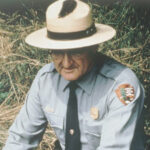 Most of us try really hard to avoid being struck by lightning…for obvious reasons, and I really don’t think anyone would ever enjoy setting a world record for the most time struck by lightning. Nevertheless, Roy Sullivan, a park ranger in Virginia for decades, spent a lot of time outdoors, a requirement of the job. During that time, Sullivan was struck by lightning multiple times. Sullivan, who holds the world record for being struck by lightning, was first hit in 1942…resulting in the loss of a big toe. The next occurrence was in 1969, during which he lost his eyebrows, and subsequent strikes in 1970, 1972, and 1973 caused burned hair and skin. Sullivan was hit twice more in 1976 and 1977. All seven strikes were documented by the superintendent of the Shenandoah National Park, R. Taylor Hoskins, and verified by doctors, making he claim to “fame” legitimate, and earning him a spot in the Guiness Book of World Records…a spot that he has held for 45 years. As I said, I don’t think anyone is really very interested in beating that record. Of that last strike, Sullivan relates that he was “fishing on Saturday morning, June 25, 1977, when lightning hit the top of his head, burning his hair, chest and stomach. He turned to his car when he spotted a black bear, trying to steal his trout. Sullivan summoned the strength to whack the bear with a stick. He’d later claim it was the twenty-second time he’d had to whack a black bear with a stick.” Sullivan’s long career as a park ranger was what put
Most of us try really hard to avoid being struck by lightning…for obvious reasons, and I really don’t think anyone would ever enjoy setting a world record for the most time struck by lightning. Nevertheless, Roy Sullivan, a park ranger in Virginia for decades, spent a lot of time outdoors, a requirement of the job. During that time, Sullivan was struck by lightning multiple times. Sullivan, who holds the world record for being struck by lightning, was first hit in 1942…resulting in the loss of a big toe. The next occurrence was in 1969, during which he lost his eyebrows, and subsequent strikes in 1970, 1972, and 1973 caused burned hair and skin. Sullivan was hit twice more in 1976 and 1977. All seven strikes were documented by the superintendent of the Shenandoah National Park, R. Taylor Hoskins, and verified by doctors, making he claim to “fame” legitimate, and earning him a spot in the Guiness Book of World Records…a spot that he has held for 45 years. As I said, I don’t think anyone is really very interested in beating that record. Of that last strike, Sullivan relates that he was “fishing on Saturday morning, June 25, 1977, when lightning hit the top of his head, burning his hair, chest and stomach. He turned to his car when he spotted a black bear, trying to steal his trout. Sullivan summoned the strength to whack the bear with a stick. He’d later claim it was the twenty-second time he’d had to whack a black bear with a stick.” Sullivan’s long career as a park ranger was what put 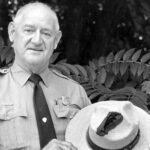 him in the path of the bears those 22 times. I’d say that is another record, I would not want to attempt to beat, not that it is in the Guiness Book of World Records. Nevertheless, I’ll leave that one right there.
him in the path of the bears those 22 times. I’d say that is another record, I would not want to attempt to beat, not that it is in the Guiness Book of World Records. Nevertheless, I’ll leave that one right there.
People who have struck by lightning will tell you things like your hair stands up on end, and that you need to get away from that area or hit the ground and stick your rear end in the air, which is supposedly the best place to take the hit, with the least amount of damage. Nevertheless, Sullivan described the moments before getting struck by lightning for Field and Stream, saying “You can smell sulfur in the air, and then your hair will stand on end, and then it’s going to get you. You don’t have time to do anything.” I don’t know if the people, who had time to get out of the area were, for some reason, less susceptible to lightning, or what caused them to be able to get away, but for some reason, Sullivan had no escape by the time these things happened. It makes he think he would have wanted to run for cover the minute he saw a dark cloud, but maybe he couldn’t really leave his post. Sullivan might have been struck by lightning eight times. You see, somewhere along the way, Sullivan earned the nickname “Human 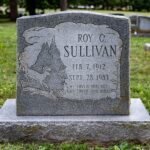 Lightning Rod,” something that upset him in his later years, because people avoided being in his presence…especially when a storm was brewing. After so many strikes, it would really be human nature to avoid him. Sullivan’s own wife was struck once too. She was hanging clothes in their back yard, and Roy was helping her at the time. For all we know, the bolt might have been aimed at him, and she got in the way.
Lightning Rod,” something that upset him in his later years, because people avoided being in his presence…especially when a storm was brewing. After so many strikes, it would really be human nature to avoid him. Sullivan’s own wife was struck once too. She was hanging clothes in their back yard, and Roy was helping her at the time. For all we know, the bolt might have been aimed at him, and she got in the way.
With all that going on in his life, you might expect that Sullivan would eventually have died as a result of lightning or the bears, but sadly, his death on September 28, 1983, was not from lightning or from a bear attack, but as a result of a self-inflicted gunshot to the head. Such a sad ending for a man who had “weathered” so much.

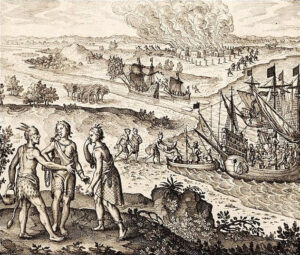 In May 1607, about 100 English colonists settled along the James River in Virginia to found Jamestown, which became the first permanent English settlement in America. Things were not going well for the settlers because of famine, disease, and Native American attacks. Then, 27-year-old English adventurer John Smith, began to directed survival efforts and mapped the area. Smith was exploring the Chickahominy River in December 1607 along with two colonists, when they were captured by Powhatan warriors. At the time, the Powhatan confederacy consisted of around 30 Tidewater-area tribes led by Chief Wahunsonacock, known as Chief Powhatan to the English. In the attack, Smith’s companions were killed, but he was spared and released. The reason, according to a 1624 account by Smith, was because of the dramatic intercession of Pocahontas, Chief Powhatan’s 13-year-old daughter. Pocahontas either had an aversion to the attacks that her people carried out on the settlers, or she could see the writing on the wall where the settlers were concerned, and knew that they would not leave, but would rather begin to cause great hardship on the tribes, because of the attacks. Her real name was Matoaka, but she was given the nickname, Pocahontas, by her father. It is a name that has been translated variously as “playful one” and “my favorite daughter.” In 1608, Smith was made president of the Jamestown colony, but that did not improve matters to a great degree, and the settlement continued to suffer. An accidental fire destroyed much of the town, and hunger, disease, and the Indian attacks continued. Things were not looking good for the settlers. Pocahontas did what she could to ease the situation, often coming to Jamestown as an ambassador of her father. Sometimes Pocahontas came bearing gifts of food to help the starving settlers. She became a friend of the settlers and soon became acquainted with English ways. Unfortunately, Smith was injured from a fire in his gunpowder bag and was forced to return to England in 1609.
In May 1607, about 100 English colonists settled along the James River in Virginia to found Jamestown, which became the first permanent English settlement in America. Things were not going well for the settlers because of famine, disease, and Native American attacks. Then, 27-year-old English adventurer John Smith, began to directed survival efforts and mapped the area. Smith was exploring the Chickahominy River in December 1607 along with two colonists, when they were captured by Powhatan warriors. At the time, the Powhatan confederacy consisted of around 30 Tidewater-area tribes led by Chief Wahunsonacock, known as Chief Powhatan to the English. In the attack, Smith’s companions were killed, but he was spared and released. The reason, according to a 1624 account by Smith, was because of the dramatic intercession of Pocahontas, Chief Powhatan’s 13-year-old daughter. Pocahontas either had an aversion to the attacks that her people carried out on the settlers, or she could see the writing on the wall where the settlers were concerned, and knew that they would not leave, but would rather begin to cause great hardship on the tribes, because of the attacks. Her real name was Matoaka, but she was given the nickname, Pocahontas, by her father. It is a name that has been translated variously as “playful one” and “my favorite daughter.” In 1608, Smith was made president of the Jamestown colony, but that did not improve matters to a great degree, and the settlement continued to suffer. An accidental fire destroyed much of the town, and hunger, disease, and the Indian attacks continued. Things were not looking good for the settlers. Pocahontas did what she could to ease the situation, often coming to Jamestown as an ambassador of her father. Sometimes Pocahontas came bearing gifts of food to help the starving settlers. She became a friend of the settlers and soon became acquainted with English ways. Unfortunately, Smith was injured from a fire in his gunpowder bag and was forced to return to England in 1609.
With Smith no longer in charge, relations with the Powhatan deteriorated. The attacks continued, and many settlers died from famine and disease in the winter of 1609-10. The settlers were about to give up and go back to England…thereby abandoning Jamestown, when Baron De La Warr (also known as Delaware) arrived in June 1610 with new supplies. It was just in time, and the settlers began to rebuild the settlement. The Delaware River and the colony of Delaware were later named after Baron De La Warr. John Rolfe also arrived in Jamestown in 1610 and two years later cultivated the first tobacco there, introducing a successful source of livelihood that would have far-reaching importance for Virginia.
Still, things were far from perfect in the rea. In the spring of 1613, English Captain Samuel Argall took Pocahontas hostage, hoping to use her to negotiate a permanent peace with her father. Seriously, kidnapping a man’s daughter is hardly the way to make peace. Pocahontas was taken to Jamestown, where she was put under the custody of Sir Thomas Gates, the marshal of Virginia. The good news was that Gates treated her as a guest rather than a prisoner and encouraged her to learn English customs. She converted to Christianity and was baptized Lady Rebecca. After much trepidation, Powhatan agreed to the terms for her release, but by then she had fallen in love with John Rolfe, who was about 10 years her senior. On April 5, 1614, Pocahontas and John Rolfe married with the blessing of Chief Powhatan and the governor of Virginia. In this case, what might have been viewed as a marriage of convenience, was actually one of love…and of convenience. Their marriage brought a peace between the English colonists and the Powhatans, and in 1615 Pocahontas gave birth to their first child, Thomas. In 1616, the couple sailed to England. Dubbed the Indian Princess, Pocahontas proved popular with the English gentry, and she was presented at the court of King James I.
In March 1617, as Pocahontas and Rolfe were preparing to sail back to Virginia…in fact, the day before they 
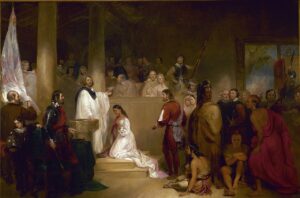 were to leave, Pocahontas died of smallpox. I’m sure Rolfe wished he had never brought her to England. She was buried at the parish church of Saint George in Gravesend, England. John Rolfe returned to Virginia and was killed in a Native American massacre in 1622. After an education in England, their son Thomas Rolfe returned to Virginia and became a prominent citizen.
were to leave, Pocahontas died of smallpox. I’m sure Rolfe wished he had never brought her to England. She was buried at the parish church of Saint George in Gravesend, England. John Rolfe returned to Virginia and was killed in a Native American massacre in 1622. After an education in England, their son Thomas Rolfe returned to Virginia and became a prominent citizen.
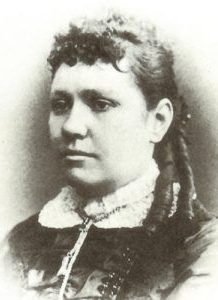 Alice Ivers Tubbs was born in Devonshire, England on February 17, 1851. She was the daughter of a conservative schoolmaster. While Alice was still a small girl, she moved with her family to the United States. The family first settled in Virginia, where Alice attended an elite boarding school for women. When she was a teenager, the family moved with the silver rush to Leadville, Colorado. As a young girl, Alice was raised to be a well-bred young lady, so few people would ever expect her to be known as “Poker Alice.” Nevertheless, marriage can change a person. While living in Leadville, Alice met a mining engineer named Frank Duffield, whom she married when she was just 20 years old. In the mining camps, gambling’s was quite common, and Frank was an enthusiastic player. He enjoyed visiting the gambling halls in Leadville and Alice naturally went along with him, rather than staying home alone. Alice stood quietly and watch her husband play…at first, but Alice was smart, and she picked up the game of poker easily. Soon she was sitting in on the games, and she was winning. Alice’s marriage to Frank Duffield was short-lived. Duffield, who worked in the mines as part of his job, was killed in an explosion. Needing to make a living, Alice, who was well educated, could have taught school, but even with 35,000 residents in Leadville, there was no school. There were also few jobs available for women, and those there were, did not appeal to Alice, so she decided to make a living gambling. Though Alice preferred the game of poker, she also learned to deal and play Faro. Very soon, she was in high demand…as a player and a dealer. Alice was a petite 5 foot 4 inch beauty, with blue eyes and thick brown hair. She was very rare in that she was a “lady” in a gambling hall…and not of the “soiled dove” variety. And Alice loved the latest fashions, she was a sight for the sore eyes of many a miner. Every time Alice had a big win, she began to take trips to New York City to buy the latest fashions.
Alice Ivers Tubbs was born in Devonshire, England on February 17, 1851. She was the daughter of a conservative schoolmaster. While Alice was still a small girl, she moved with her family to the United States. The family first settled in Virginia, where Alice attended an elite boarding school for women. When she was a teenager, the family moved with the silver rush to Leadville, Colorado. As a young girl, Alice was raised to be a well-bred young lady, so few people would ever expect her to be known as “Poker Alice.” Nevertheless, marriage can change a person. While living in Leadville, Alice met a mining engineer named Frank Duffield, whom she married when she was just 20 years old. In the mining camps, gambling’s was quite common, and Frank was an enthusiastic player. He enjoyed visiting the gambling halls in Leadville and Alice naturally went along with him, rather than staying home alone. Alice stood quietly and watch her husband play…at first, but Alice was smart, and she picked up the game of poker easily. Soon she was sitting in on the games, and she was winning. Alice’s marriage to Frank Duffield was short-lived. Duffield, who worked in the mines as part of his job, was killed in an explosion. Needing to make a living, Alice, who was well educated, could have taught school, but even with 35,000 residents in Leadville, there was no school. There were also few jobs available for women, and those there were, did not appeal to Alice, so she decided to make a living gambling. Though Alice preferred the game of poker, she also learned to deal and play Faro. Very soon, she was in high demand…as a player and a dealer. Alice was a petite 5 foot 4 inch beauty, with blue eyes and thick brown hair. She was very rare in that she was a “lady” in a gambling hall…and not of the “soiled dove” variety. And Alice loved the latest fashions, she was a sight for the sore eyes of many a miner. Every time Alice had a big win, she began to take trips to New York City to buy the latest fashions.
Due to her traveling from one mining camp to another to play poker, Alice soon acquired the nickname “Poker Alice.” In addition to playing the game, she often worked as a dealer, in cities all over Colorado including Alamosa, Central City, Georgetown, and Trinidad. Later on, Alice began to puff on large black cigars, still wearing her fashionable frilly dresses. She, nevertheless, never gambled on Sundays because of her religious beliefs. Alice carried a .38 revolver and wasn’t afraid to use it. It was rather a necessity, due to her lifestyle. Alice soon left Colorado and made her way to Silver City, New Mexico, where she broke the bank at the Gold Dust Gambling House, winning some $6,000. The win was followed by a trip to New York City, to replenish her wardrobe of fashionable clothing. Afterward, she returned to Creede, Colorado. She went to work as a dealer in Bob Ford’s saloon…the man who had earlier killed Jesse James. Alice later moved to Deadwood, South Dakota around 1890. In Deadwood, she met a man named Warren G. Tubbs, who worked as a housepainter in Sturgis, but sidelined as a dealer and  gambler. Alice usually beat Tubbs at poker, but that didn’t bother him. He was taken with her and they began to see each other socially. Once a drunken miner threatened Tubbs with a knife, Alice pulled out her .38 and put a bullet into the miner’s arm. I’m sure that man thought the threat was Tubbs, but the man should have watched Alice in stead. Later, the couple married and had seven children…four sons and three daughters. Because Tubbs was a painter by trade, he, along with Alice’s gambling profits, supported the family. The family moved out of Deadwood, to homesteaded a ranch near Sturgis on the Moreau River. Finally, Alice found something she loved more than gambling…for the most part. She helped with the ranch and raised her children. Then, fate would again deal Alice a bad hand. Tubbs was diagnosed with tuberculosis. Alice refused to leave his side. She planned to nurse him back to health. Tubbs lost his fight, and died of pneumonia in the winter of 1910. Alice was determined to give him a proper burial, so she loaded him into a horse-drawn wagon to take his body to Sturgis. It is thought that she had to pawn her wedding ring to pay for the funeral and afterward, went to a gambling parlor to earn the money to get her ring back.
gambler. Alice usually beat Tubbs at poker, but that didn’t bother him. He was taken with her and they began to see each other socially. Once a drunken miner threatened Tubbs with a knife, Alice pulled out her .38 and put a bullet into the miner’s arm. I’m sure that man thought the threat was Tubbs, but the man should have watched Alice in stead. Later, the couple married and had seven children…four sons and three daughters. Because Tubbs was a painter by trade, he, along with Alice’s gambling profits, supported the family. The family moved out of Deadwood, to homesteaded a ranch near Sturgis on the Moreau River. Finally, Alice found something she loved more than gambling…for the most part. She helped with the ranch and raised her children. Then, fate would again deal Alice a bad hand. Tubbs was diagnosed with tuberculosis. Alice refused to leave his side. She planned to nurse him back to health. Tubbs lost his fight, and died of pneumonia in the winter of 1910. Alice was determined to give him a proper burial, so she loaded him into a horse-drawn wagon to take his body to Sturgis. It is thought that she had to pawn her wedding ring to pay for the funeral and afterward, went to a gambling parlor to earn the money to get her ring back.
For Alice, the time spent on the ranch were some of the happiest days of her life and that during those years, she didn’t miss the saloons and gambling halls. Alice liked the peace and quiet of the ranch. Still, she had to make a living, so after Tubbs’ death, she hired a man named George Huckert to take care of the homestead, and she moved to Sturgis to earn her way. Huckert quickly fell in love with Alice and proposed marriage to her several times. Alice didn’t really love him, but finally married him, saying flippantly, “I owed him so much in back wages; I figured it would be cheaper to marry him than pay him off. So I did.” Once again, the marriage would be short. Alice was widowed once again when Huckert died in 1913.
During the Prohibition years, Alice opened a saloon called “Poker’s Palace” between Sturgis and Fort Meade that provided not only gambling and liquor, but also “women” who serviced the customers. One night, a drunken soldier began a fight in the saloon. He was destroying the furniture, and causing a ruckus. Alice pulled her .38 and shot the man. While in jail awaiting trial, she calmly smoked cigars and read the Bible. She was acquitted on grounds of self-defense, but her saloon had been shut down. Now, in her 70s and with her beauty and fashionable gowns long gone, Alice struggled in her last years. She continued to gamble, but these days, she dressed in men’s clothing. Once in a while, she was featured at 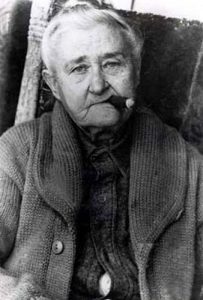 events like the Diamond Jubilee, in Omaha, Nebraska, as a true frontier character, where she was known to have said, “At my age, I suppose I should be knitting. But I would rather play poker with five or six ‘experts’ than eat.” She continued to run a “house” of ill-repute in Sturgis during her later years and was often arrested for drunkenness and keeping a disorderly house. Though she paid her fines, she continued to operate the business until she was finally arrested for repeated convictions of running a brothel and sentenced to prison. The governor took pity on Alice, who was then 75 years old, and pardoned her. At the age of 79, Alice underwent a gall bladder operation in Rapid City. Unfortunately, she died of complications on February 27, 1930. She was buried at Saint Aloysius Cemetery in Sturgis, South Dakota. In her lifetime, Alice claimed to have “won more than $250,000 at the gaming tables and never once cheated.” In fact, one of her favorite sayings was, “Praise the Lord and place your bets. I’ll take your money with no regrets.”
events like the Diamond Jubilee, in Omaha, Nebraska, as a true frontier character, where she was known to have said, “At my age, I suppose I should be knitting. But I would rather play poker with five or six ‘experts’ than eat.” She continued to run a “house” of ill-repute in Sturgis during her later years and was often arrested for drunkenness and keeping a disorderly house. Though she paid her fines, she continued to operate the business until she was finally arrested for repeated convictions of running a brothel and sentenced to prison. The governor took pity on Alice, who was then 75 years old, and pardoned her. At the age of 79, Alice underwent a gall bladder operation in Rapid City. Unfortunately, she died of complications on February 27, 1930. She was buried at Saint Aloysius Cemetery in Sturgis, South Dakota. In her lifetime, Alice claimed to have “won more than $250,000 at the gaming tables and never once cheated.” In fact, one of her favorite sayings was, “Praise the Lord and place your bets. I’ll take your money with no regrets.”
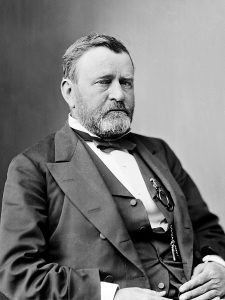 Often we think that the best course of action is to simply attack a problem head on, but that is not always true, as Union General Ulysses S. Grant would find out on June 3, 1864. The United States was deep into the Civil War, and on that particular day, and the Confederate Army was entrenched at Cold Harbor, Virginia. General Grant was about to make the greatest mistakes of his career.
Often we think that the best course of action is to simply attack a problem head on, but that is not always true, as Union General Ulysses S. Grant would find out on June 3, 1864. The United States was deep into the Civil War, and on that particular day, and the Confederate Army was entrenched at Cold Harbor, Virginia. General Grant was about to make the greatest mistakes of his career.
Since the battle began on May 31st, Grant’s Army of the Potomac and Robert E. Lee’s Army of Northern Virginia had inflicted frightful losses upon each other as they worked their way around Richmond, Virginia…from the Wilderness forest to Spotsylvania and numerous smaller battle sites…the previous month. On May 30, Lee and Grant collided  at Bethesda Church. The next day the battle began when the advance units of the armies arrived at the crossroads of Cold Harbor, which was just 10 miles from Richmond, Virginia. There, a Yankee attack seized the intersection. Grant decided that this was the perfect chance to destroy Lee at the gates of Richmond, Grant prepared for a major assault along the entire Confederate front on June 2nd, but his plan was delayed because the necessary troops…Winfield Hancock’s Union corps did not arrive on schedule, the operation was delayed until the following day.
at Bethesda Church. The next day the battle began when the advance units of the armies arrived at the crossroads of Cold Harbor, which was just 10 miles from Richmond, Virginia. There, a Yankee attack seized the intersection. Grant decided that this was the perfect chance to destroy Lee at the gates of Richmond, Grant prepared for a major assault along the entire Confederate front on June 2nd, but his plan was delayed because the necessary troops…Winfield Hancock’s Union corps did not arrive on schedule, the operation was delayed until the following day.
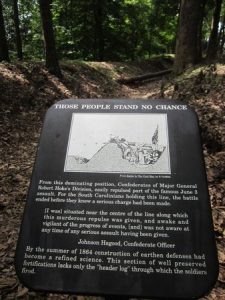
The delay was a tragic move for the Union army, because it gave Lee’s troops time to entrench. Grant was frustrated with the prolonged pursuit of Lee’s army, so he gave the order to attack on June 3, but the entrenched Confederate army had the protection of deep trenches atop a hill, making the Union army have to attack without cover. It was a decision that resulted in a complete disaster. The Yankees were met with murderous fire, and were only able to reach the Confederate trenches in a few places. The 7,000 Union casualties, compared to only 1,500 for the Confederates, were all lost in under an hour. A dejected Grant pulled out of Cold Harbor nine days later and continued to try to flank Lee’s army. His next stop was Petersburg, south of Richmond, where he forced a nine-month siege. While Petersburg would redeem him some, there would be no more attacks on the scale of Cold Harbor.
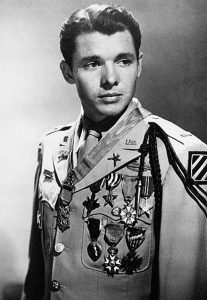 Recently, I found out that I am related to Audie Murphy, who was one of the most decorated American combat soldiers in World War II. As it turns out, he is my 7th cousin 3 times removed, on my dad’s side of the family. We share the same grandfather, Thomas Fuller, who is my 9th great grandfather, and Audie’s 7th great grandfather. Audie became an actor in 1948 and 1969, during which time he was beloved by many people, including my parents. I think they would have been very excited to find out that he was actually related to them, but then I guess they already know it by now. While his acting was impressive, it was his military career that always impressed my parents.
Recently, I found out that I am related to Audie Murphy, who was one of the most decorated American combat soldiers in World War II. As it turns out, he is my 7th cousin 3 times removed, on my dad’s side of the family. We share the same grandfather, Thomas Fuller, who is my 9th great grandfather, and Audie’s 7th great grandfather. Audie became an actor in 1948 and 1969, during which time he was beloved by many people, including my parents. I think they would have been very excited to find out that he was actually related to them, but then I guess they already know it by now. While his acting was impressive, it was his military career that always impressed my parents.
Audie Leon Murphy, was born on June 20, 1925 to Josie Bell Killian and Emmett Berry Murphy in Kingston, Texas. He was born into a large family of sharecroppers. Before long, his father abandoned them, and then his mother died when he was a teenager. Murphy left school in fifth grade to pick cotton and find other work to help support his family. He was a skilled rifleman, and hunting became a necessity for putting food on the table.
After the Japanese attacked Pearl Harbor in 1941, Murphy’s decided that he wanted to help, but he was too young. His older sister helped him to falsify documentation about his birthdate in order to meet the minimum-age requirement for enlisting in the military, because he was only 16 at the time. He was turned down by the Navy and the Marine Corps, so he enlisted in the Army. He first saw action in the 1943 Allied invasion of Sicily. Then, in 1944 he participated in the Battle of Anzio, the liberation of Rome, and the invasion of southern France. Murphy fought at Montélimar and led his men on a successful assault at the L’Omet quarry near Cleurie in northeastern France in October. He received every military combat award for valor available from the U.S. Army, as well as French and Belgian awards for heroism. Murphy received the Medal of Honor for valor that he demonstrated at the age of 19 for single-handedly holding off an entire company of German soldiers for an 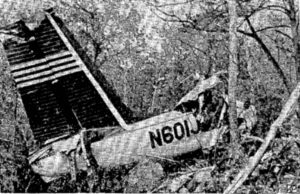 hour at the Colmar Pocket in France in January 1945, then leading a successful counterattack while wounded and out of ammunition.
hour at the Colmar Pocket in France in January 1945, then leading a successful counterattack while wounded and out of ammunition.
After his acting career ended, Murphy, like many actors without work, experienced money problems, but still, he refused offers to appear in alcohol and cigarette commercials, because he did not want to set a bad example. He never let Hollywood take away his high moral standards. Murphy died in a plane crash in Virginia in 1971, shortly before his 46th birthday. Such a sad ending to an amazing life. He was interred with full military honors at Arlington National Cemetery. His grave is one of the most visited sites in the cemetery.
 Most safety measures have come from disasters caused by a lack of safety measures. The Hawk’s Nest Tunnel disaster was no different. But sometimes, the safety measures were known and readily available, but were not used, often to save time or money, and always in blatant disregard for the lives of the workers. On March 30, 1930, construction began on the Hawk’s Nest Tunnel. The tunnel was supposed to be a good thing, and in the end, it was, but the necessary measures were not used to keep the workers safe, and the time they spent in the tunnel turned out to be deadly.
Most safety measures have come from disasters caused by a lack of safety measures. The Hawk’s Nest Tunnel disaster was no different. But sometimes, the safety measures were known and readily available, but were not used, often to save time or money, and always in blatant disregard for the lives of the workers. On March 30, 1930, construction began on the Hawk’s Nest Tunnel. The tunnel was supposed to be a good thing, and in the end, it was, but the necessary measures were not used to keep the workers safe, and the time they spent in the tunnel turned out to be deadly.
This tunnel would be used to divert much of the flow of the New River from the Hawk’s Nest Dam under Gauley Mountain, located about 3 miles away, to a hydro-electric plant at the other end. As construction proceeded, it was discovered that the rock they were cutting had a high silica content. Silica was used in steel making. It seemed like a win-win situation, but  not for the 3,000 mostly African-American migrant workers from the south. Rhinehart and Dennis, a company from Charlottesville, Virginia, was awarded the contract. While the management, who visited the tunnel periodically, wore masks and breathing equipment, the workers were not given such equipment. Drilling should have been done using water, but it was not. They were trying to save time and money. The workers were exposed to the silica dust and developed a lung disease called silicosis, for which there is no cure.
not for the 3,000 mostly African-American migrant workers from the south. Rhinehart and Dennis, a company from Charlottesville, Virginia, was awarded the contract. While the management, who visited the tunnel periodically, wore masks and breathing equipment, the workers were not given such equipment. Drilling should have been done using water, but it was not. They were trying to save time and money. The workers were exposed to the silica dust and developed a lung disease called silicosis, for which there is no cure.
This deliberate disregard for safety caused some of the workers to become sick and die from silicosis within a year. There were only 109 admitted deaths, but a Congressional hearing conducted later determined that there were actually 476 deaths attributed to the project. Since that time, some sources have said the number could actually be as high as 700 to 1,000 deaths. This takes into account the workers that could have had minimal  exposure to the silica but were affected by it later in life.
exposure to the silica but were affected by it later in life.
The Hawk’s Nest Tunnel is still in use today, diverting water from the New River to produce hydro-electricity for the Alloy plant. Silicosis has been designated an occupational disease. Now compensation for workers affected by it is available. Unfortunately, the tunnel workers at Hawk’s Nest were not protected by these laws. This project is considered to be one of the worst industrial disasters in American history. The tunnel did its job, and continues to do so. I just wish it hadn’t cost so many lives to make the tunnel. It should not have had to come at such a great price.
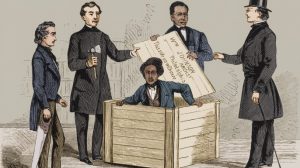 There are times when what you know is what gets you through a bad situation, but there are some situations that really do requiring knowing someone who can help. For the slaves in the pre-emancipation era of the United States, that was as true as it gets. The slaves had none of the most important asset needed for escape…money. That didn’t stop the attempts. One slave who was from the deeper south, Henry “Box” Brown, decided to mail himself to safety. That did work, but not everyone had the ability to get that done, and so the majority just decided to make a run for it…only to be met by dogs or Bounty Hunters…neither was going to have a good outcome.
There are times when what you know is what gets you through a bad situation, but there are some situations that really do requiring knowing someone who can help. For the slaves in the pre-emancipation era of the United States, that was as true as it gets. The slaves had none of the most important asset needed for escape…money. That didn’t stop the attempts. One slave who was from the deeper south, Henry “Box” Brown, decided to mail himself to safety. That did work, but not everyone had the ability to get that done, and so the majority just decided to make a run for it…only to be met by dogs or Bounty Hunters…neither was going to have a good outcome.
One rather famous slave named Mustapha, teamed up with a white hunchback named Arthur Howe and conned his way to freedom. It was probably the most outrageous, and yet the best planned escape there was. The plan was simple, the pair traveled through North Carolina and Virginia, telling anyone they met that Mustapha was Howe’s slave. Since Howe was famous for his fearsome appearance and “expressive of dark angry passions,” that few people dared to ask any more questions. Whenever Howe and Mustapha, reached a town, Howe would sell Mustapha for a tidy fee. After a few days recuperating, Mustapha would escape again and the partners would resume their journey. Not only did this help avoid bounty hunters, who would be looking for an escaped slave, rather than a current one, it brought in a tidy profit as well. Mustapha was quite a brave man. He was not worried that he would not be able to escape the people he was sold too. Most slaves struggled to escape once…Mustapha did it every week. 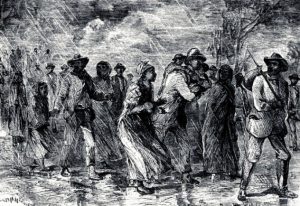 He also had to trust Howe to continue to be there waiting for him so they could continue their journey.
He also had to trust Howe to continue to be there waiting for him so they could continue their journey.
The plan worked perfectly and as planned the pair parted ways, after reaching Petersburg or Richmond. This put Mustapha free to make his escape north. Since he was not apprehended, it is believed that this was what happened. No one is exactly positive about that, but the duo dropped out of history after that, so it is believed to be the way everything went down. When we look back on the many deaths that followed an escape attempt, I have to think that it is sad that more slaves didn’t think of this idea. I’m sure the many slave owners who were scammed though, I think there was a little justice in the world after all.
 When people first began immigrating to the English Colonies, travel was not easy. In fact, sometimes it was absolutely treacherous. The only way to reach the new world was to travel by ship, and since storms were not able to be predicted far in advance, like they are these days, they sometimes found themselves at the mercy of the raging storm they were caught in. The first person known to have reached Bermuda was the Spanish sea captain Juan de Bermúdez in 1503. The islands are named after him. He claimed the islands for the Spanish Empire. De Bermúdez never landed on the islands, but made two visits to the island chain, and over the course of those visits, he created a recognizable map. I’m sure that at some point, de Bermúdez assumed that there would be people living on the islands, but it was not expected to be quite as soon as it was, or in quite the way that it was populated.
When people first began immigrating to the English Colonies, travel was not easy. In fact, sometimes it was absolutely treacherous. The only way to reach the new world was to travel by ship, and since storms were not able to be predicted far in advance, like they are these days, they sometimes found themselves at the mercy of the raging storm they were caught in. The first person known to have reached Bermuda was the Spanish sea captain Juan de Bermúdez in 1503. The islands are named after him. He claimed the islands for the Spanish Empire. De Bermúdez never landed on the islands, but made two visits to the island chain, and over the course of those visits, he created a recognizable map. I’m sure that at some point, de Bermúdez assumed that there would be people living on the islands, but it was not expected to be quite as soon as it was, or in quite the way that it was populated.
On July 28, 1609, a ship named Sea Ventureran into a reef that surrounds Bermuda during a hurricane. The ship was on its way to Jamestown, Virginia, but would not make it to that destination. The Sea Venture set out for Virginia on June 2, 1609, under the command of Sir George Somers, admiral of the fleet, with Christopher Newport as captain and Sir Thomas Gates, Governor of the colony. Sea Venture sailed with a fleet of ships, including the Falcon, Diamond, Swallow, Unity, Blessing, Lion, and two smaller ships. The ships were only eight days from the coast of Virginia, when they were suddenly caught in a hurricane. The Sea Venture became separated from the rest of the fleet, while its crew fought the storm for three days. Other ships the size of Sea Venture had successfully fought and survived such weather, but the Sea Venture had a one major problem. The Sea Venture was a new ship, and its timbers had not yet set. The storm forced the caulking from between the timbers, and the ship began to leak rapidly. The crew began desperately bailing, but water continued to pour into the hold. The crew threw some of the guns overboard in an effort to make the ship lighter, but this only delayed the inevitable.
The island was owned as an extension of Virginia by the Virginia Company until 1614. Then the Somers Isles Company, took over in 1615 and managed the colony until 1684. At that time, the company’s charter was 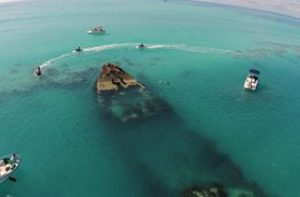 revoked, and England took over administration. Bermuda became a British colony following the 1707 unification of the parliaments of Scotland and England, which created the Kingdom of Great Britain. After 1949, when Newfoundland became part of Canada, Bermuda became the oldest remaining British overseas territory. After the return of Hong Kong to China in 1997, Bermuda became the most populated British territory. Today, Bermuda is a popular vacation spot for many tourists. Cruise ships and planes arrive daily. I’m sure the islands would have eventually been populated, but in the case of Bermuda, it was very much an accidental population, caused by an unfortunate ship wreck that first brought its survivors to the islands.
revoked, and England took over administration. Bermuda became a British colony following the 1707 unification of the parliaments of Scotland and England, which created the Kingdom of Great Britain. After 1949, when Newfoundland became part of Canada, Bermuda became the oldest remaining British overseas territory. After the return of Hong Kong to China in 1997, Bermuda became the most populated British territory. Today, Bermuda is a popular vacation spot for many tourists. Cruise ships and planes arrive daily. I’m sure the islands would have eventually been populated, but in the case of Bermuda, it was very much an accidental population, caused by an unfortunate ship wreck that first brought its survivors to the islands.
 Thanksgiving Day is behind us for this year, of course, but today is a day that ties into Thanksgiving in a big way. On September 16, 1620, the Mayflower left Plymouth, England on its way to the New World. I can’t begin to imagine how so many of our ancestors must have felt at that time. It was going to be a long voyage, and some of them might not make it to the end of the trip, but going was worth the risk. There were 102 passengers on the 90 foot ship. The ship was bound for Virginia, where the colonists half of whom were religious dissenters and half of whom were entrepreneurs, and all of whom had been authorized to settle in the New World by the British crown. The trip was difficult, with rough seas and storms that blew the ship 500 miles off course. When they landed, it was in Massachusetts and not Virginia that the colonists found themselves, and I guess they were not bound by the exact location, because no one was there to tell them that they had to move. So they settled there.
Thanksgiving Day is behind us for this year, of course, but today is a day that ties into Thanksgiving in a big way. On September 16, 1620, the Mayflower left Plymouth, England on its way to the New World. I can’t begin to imagine how so many of our ancestors must have felt at that time. It was going to be a long voyage, and some of them might not make it to the end of the trip, but going was worth the risk. There were 102 passengers on the 90 foot ship. The ship was bound for Virginia, where the colonists half of whom were religious dissenters and half of whom were entrepreneurs, and all of whom had been authorized to settle in the New World by the British crown. The trip was difficult, with rough seas and storms that blew the ship 500 miles off course. When they landed, it was in Massachusetts and not Virginia that the colonists found themselves, and I guess they were not bound by the exact location, because no one was there to tell them that they had to move. So they settled there.
I did not recognize anyone on the passenger list that I specifically knew to be related to me, but there were numerous sir names that I have seen in my own family history. In researching the genealogy of the people from the Mayflower however, I find that we are related to some of them because, some of the people that we know that we are related to are related to some of them. An expedition of men was sent out to scout the land, and the ship remained anchored at the tip of Cape Cod in what is now Provincetown harbor in present day Provincetown, Massachusetts. While the men were out scouting for a suitable place to build a town, Susanna White, a passenger on the ship, gave birth to her second child, a son named Peregrine. He was the first English child born in New England.
The expedition found a suitable place to settle, with cleared fields and plentiful water. They returned to the ship and the ship was moved to what is now Plymouth Harbor, arriving on December 21st. Two days later, on December 23, 1620, construction began on the settlement that was to be named Plymouth…this day 394 years ago. The first year was really difficult, with half of the people dying of disease. It was a difficult time for the colonists. It wasn’t until 1621 that the health of the people improved…as did the economic condition, with a great harvest.
To celebrate, the governor, William Bradford invited neighboring Indians to Plymouth to celebrate the bounty of the year’s harvest, in what would become the first Thanksgiving Day celebration. The people secured peace treaties with the Indians, and soon more people were attracted to the settlement of Plymouth. By the 1640s the population was over 3,000, but was nevertheless, overshadowed by the larger population of the  Massachusetts Bay Colony that was started by Puritans in 1629.
Massachusetts Bay Colony that was started by Puritans in 1629.
Nevertheless, it would be the Plymouth colony who would have the honor of hosting the first Thanksgiving, and the honor of being know as the first Pilgrims. The name pilgrim did not come into being until the early 19th century and it was from a manuscript written by Govern Bradford in which he spoke of the “saints” who traveled to the New World as “pilgrimes” in 1620. Orator Daniel Webster spoke of the “Pilgrim Fathers” at a bicentennial celebration of Plymouths founding. The name pilgrim stuck and they have been know as such in history ever since. So, while Thanksgiving is past, believe it or not, its beginning actually happened on December 23, 1620, almost a year before the actual event took place.

